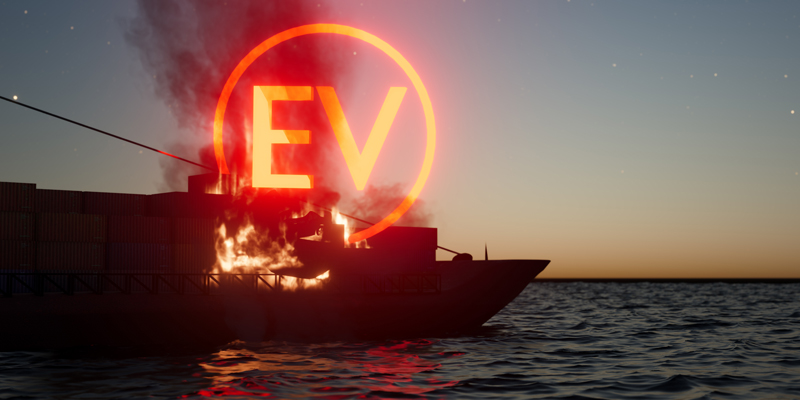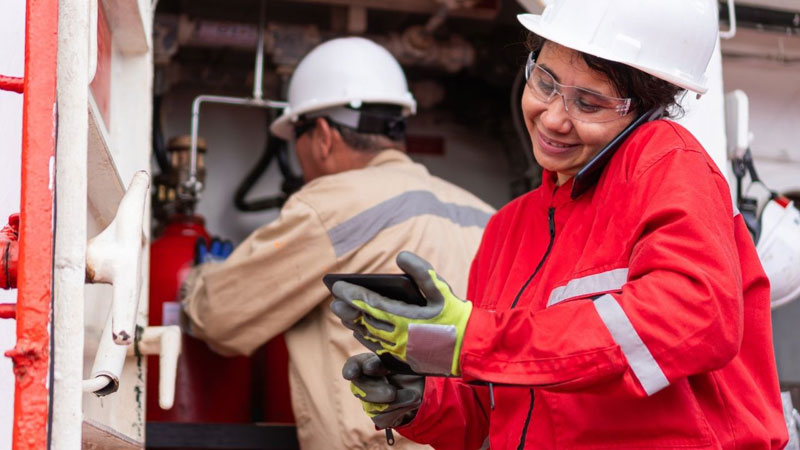IN THE KNOW

HOW TO MANAGE LITHIUM BATTERY MARINE CARGO FIRE RISKS CONFIDENTLY
 Container fires at sea linked to EV lithium batteries highlight the growing need for prevention and insurance protection.
Container fires at sea linked to EV lithium batteries highlight the growing need for prevention and insurance protection.
Thanks for visiting us at MIAPEX 2025. If we missed you at the booth, here’s the TGC Asia recap on lithium battery marine cargo fire risks - and how compliance keeps shipments moving while insurance keeps them protected.
Electric vehicle sales are booming. Hundreds of thousands of EVs are being exported and imported, carried by sea from continent to continent. The world’s supply chains are evolving to handle the risk of transporting them, a hot topic fuelled by a string of fires. In this article we explore how shippers, logistics companies and insurers are working together to reduce today’s fast-evolving lithium-ion (Li-ion) marine cargo fire risks.
EXPLORING LITHIUM BATTERY MARINE CARGO FIRE RISKS
Because Li-ion batteries contain electrolyte, they can ignite. Damaged, short-circuited, badly made, badly packed, over-charged or overheated batteries can cause fires. They make existing fires on board worse and, once started, are notoriously hard to put out, sometimes re-igniting days or even weeks later. Thermal runaway (a self-heating event that can lead to explosion) and toxic gases compound the danger, alongside serious environmental impact.
It’s clear insurance has a major role to play in supporting the maritime sector. While maritime experts discuss ships designed to carry large numbers of Li-ion batteries and EVs safely, underwriters focus on proper declaration and preventive measures — the things that keep shipments insurable.
A FLURRY LI-ION FIRES AT SEA
Although total shipping losses are roughly half what they were a decade ago, fires involving Li-ion batteries stand out.
- Felicity Ace (March 2022): ro-ro car carrier with around 4,000 EVs; sank after a major fire.
- Höegh Xiamen (2020): fire fought for eight days off Florida; improper battery securing cited.
- Fremantle Highway (2023): PCTC off the Netherlands with about 3,800 EVs; investigators pointed to an EV battery as the source.
- Istra Ace, Genius Star XI (late 2023) and Kaimana Hila (January 2024): all involved Li-ion batteries.
THE COST OF MARTIME LITHIUM-ION BATTERY FIRES
Between 2012 and 2021, fire was the third biggest cause of losses at sea (120 out of 892 reported). Allianz Global Corporate & Specialty (AGCS) analysis of more than 240,000 marine claims (2017–2021) shows fire and explosion losses totalling €9.2bn, around 18% of all claim value.
Tip: keep the amount in EUR online to avoid exchange-rate drift.
 Marine fire crews receive specialist training to handle lithium-ion battery fires at sea.
Marine fire crews receive specialist training to handle lithium-ion battery fires at sea.
WELL TRAINED PEOPLE
AGCS recommends role-specific training so everyone knows how to prevent, detect and respond to Li-ion risks. Crew need training to fight Li-ion fires and vessels must be fitted with appropriate firefighting equipment.
DETAILED PRE-PLANNING
Large EV batteries pose higher fire risk than small consumer cells, so emergency and hazard control plans are often a condition of cover. Insurers expect operators to show clear prevention and response measures because these directly affect loss outcomes and premium assessment. Removing damaged or defective batteries promptly is part of that control.
FOLLOW THE MANUFACTURER’S
Adhering to manufacturer and safety authority guidance on storage, separation and heat exposure isn’t just good practice — it’s an underwriting concern. Measures like distancing from combustibles, protecting terminals and ensuring accessible firefighting equipment signal proactive risk management and can influence both rating and scope of cover.
 Automated battery production lines ensure consistency and quality — key to reducing marine cargo fire risk.
Automated battery production lines ensure consistency and quality — key to reducing marine cargo fire risk.
PACKING AND CHARGE CONTROLS
Correct stacking, spacing and charge management are critical for safety and insurability. Improperly packed or over-charged batteries raise the likelihood of thermal runaway and may invalidate cover if investigations find storage or declaration deficiencies. Underwriters typically look for evidence that packing and charge controls follow manufacturer specifications and IMDG standards. The safer the handling, the more straightforward the coverage — and the faster the claim process if something goes wrong.
TAILORED CHECKS FOR
For EV shipments, clear documentation and visible battery identification support risk transparency. From an insurer’s standpoint, clarity over battery type, condition and disconnection status helps ensure regulatory compliance and avoids disputes or delays at claim time.
 TGC Asia’s marine and logistics specialists monitor evolving EV and lithium battery risk trends.
TGC Asia’s marine and logistics specialists monitor evolving EV and lithium battery risk trends.
THE INSURANCE ANGLE
The lithium-ion marine cargo fire risk story is still evolving, and the insurance market is learning alongside shippers and carriers. With over 20 years of experience in specialist marine and logistics insurance, TGC Asia continues to monitor these developments closely — bridging regulatory awareness with practical protection. Compliance keeps shipments moving, and insurance keeps them protected.
WANT TO LEARN MORE OR GET COVERAGE ADVISE
If you didn’t get a chance to visit us at MIAPEX 2025 but would like to learn more about marine cargo insurance or how to protect shipments involving lithium batteries and EVs, please fill out our short enquiry form below. Our team will be in touch to share relevant insights or arrange a discussion that fits your business needs.
Sourceshttps://commercial.allianz.com/news-and-insights/reports/lithium-ion-batteries.html
https://chat.deepseek.com/ (list of reported Li-ion battery fires at sea since 2021)